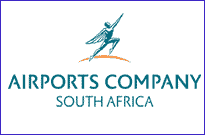Morocco: Morocco Transportation Profile
2015/01/27

There is railways and paved roads in the north and northwest, serving the nation's largest cities and most developed areas. Casablanca is the principal seaport. The busiest international airports are at Casablanca, Rabat, and Tangier.
Morocco: Picking up speed
As rail passenger numbers continue to multiply, the construction of Morocco’s planned high-speed rail network, set to enter service in 2015, is picking up speed. The project, which is being developed along with plans to upgrade and increase the capacity of the standard-gauge rail network, is attracting major institutional financing.
The number of Moroccan rail passengers increased to 31m in 2010, up by 4.7% on 2009 figures. Passenger numbers have risen every year since 2004, increasing at a compound annual growth rate (CAGR) of approximately 9%. The distance passengers are traveling has been growing even faster, rising by 5% to 4.4bn km in 2010, with a CAGR of approximately 10% since 2004.
Rail freight has had a tougher ride, with both tonnes transported and freight tonne kilometres (FTK) having fallen during the global downturn in 2008 and 2009. However, both rebounded strongly in 2010, with tonnes transported growing by 44% on 2009 figures to 36m tonnes in 2010, while FTK jumped by 36% in the same period.
The upward trajectory looks poised to continue through 2011, with rail passenger numbers in the first half of the year growing by 13% on the same period in 2010 to 17m. An additional 3.6m people used the train network in July for a total average of 120,000 customers per day, compared with an average of around 84,000 in 2010.
In line with this growth in demand, the Moroccan government is investing heavily in both rolling stock and track. The largest investment project by far is the country’s planned high-speed rail line, which will run between the economic capital Casablanca and the major north-eastern port city of Tangier. The project will cost an estimated Dh20bn (€1.78bn) and is set to begin service in December 2015. It is expected to reduce the travel time between the two cities from five hours, 45 minutes to two hours, 10 minutes, with a maximum speed of 320 km per hour along a 200-km stretch of the line. The authorities predict that 6m passengers will travel on the high-speed network annually.
In late July Mohamed Smouni, the director of development for the National Office for Railways of Morocco (Office National des Chemins de Fer du Maroc, ONCF), told press that the project was proceeding on schedule, assuring that the ONCF and its partners were in the process of wrapping up preparatory works and were moving towards commencing work on the civil engineering phase of the project.
French President Nicolas Sarkozy in early September indicated that he would travel to Tangier at the end of month to attend the beginning of construction works on the line, a reflection of the fact that French companies are heavily involved in the project. French national railway company SNCF will be in charge of designing, building and operating the rolling stock and maintaining the track.
The French firm Alstom in December last year signed a €400m deal with the ONCF to provide 14 high-speed double-decker trains that are to be assembled in Morocco, each able to carry at least 533 passengers. In June Alstom also signed an agreement with French cable manufacturer Nexans to create a joint venture firm that will produce cables and other equipment to be used in this project, as well as in the Casablanca urban tram network project, in which Alstom is also involved.
France, along with a number of other European countries, is also channelling loans and grants to the Moroccan project, worth some Dh2bn (€177m). Financing has come from further abroad as well, and in July the Kuwait Fund for Arab Economic Development agreed to provide a loan of Dh712m (€63m) towards the high-speed network.
Other segments of the country’s rail system are also attracting financing. In March the African Development Bank finalised an agreement to lend Morocco €300m towards a planned Dh5.1bn (€453m) project to increase the capacity of the Marrakech-Tangier line as a whole. The line accounted for 16m passengers in 2010, just over half of all Moroccan rail traffic. The capacity expansion project is part of a wider Dh12.8bn (€1.14bn) railway investment programme to be carried out between 2010 and 2015.
- Morocco News
-
- BOTSWANA: Children on the move from Africa do not first aim to go to Europe, new UNICEF study shows
- BOTSWANA: WHO lauds Africa’s progress in malaria, HIV control
- NIGERIA: Moroccan King Mohammed VI
- BOTSWANA: South Africa plays an active role in the AU
- BOTSWANA: Africa: How to Adapt to Beat Crippling Droughts
- BOTSWANA: Africa: Expanded Engagement for Caterpillar - Boosting Sales & Alleviating Poverty
- Trending Articles
-
- QATAR: Qatar focuses on preventive care in new national health strategy
- CHINA: Why China and Russia will be best frenemies forever
- NIGERIA: The Federal Government Begs Dangote to Complete Refinery Before 2019
- TANZANIA: Acacia Mining aims resume dividend if Tanzania export ban ends
- EGYPT: Sudan: Egyptian FM to Visit Sudan Wednesday
- BOTSWANA: Africa: How to Adapt to Beat Crippling Droughts








